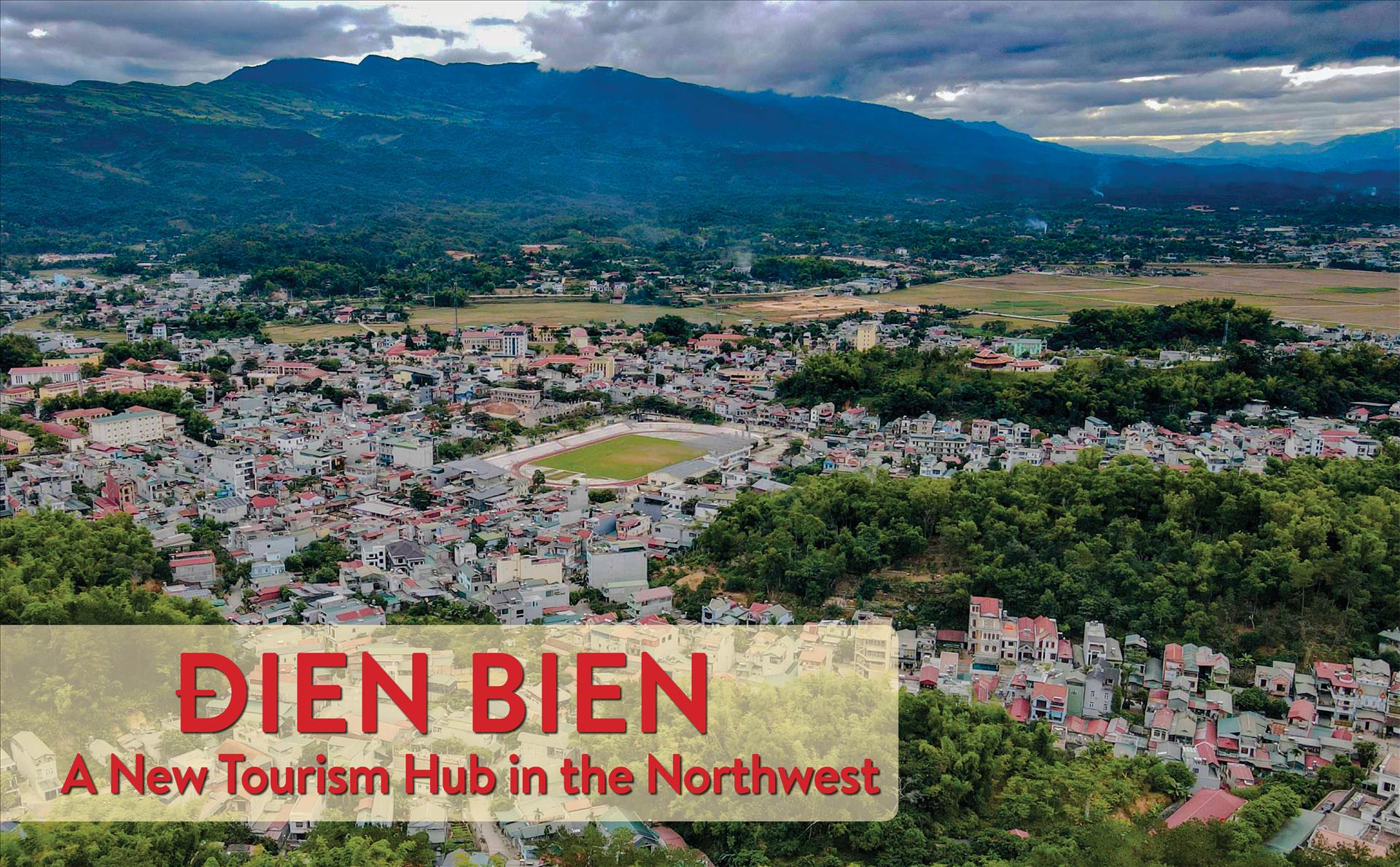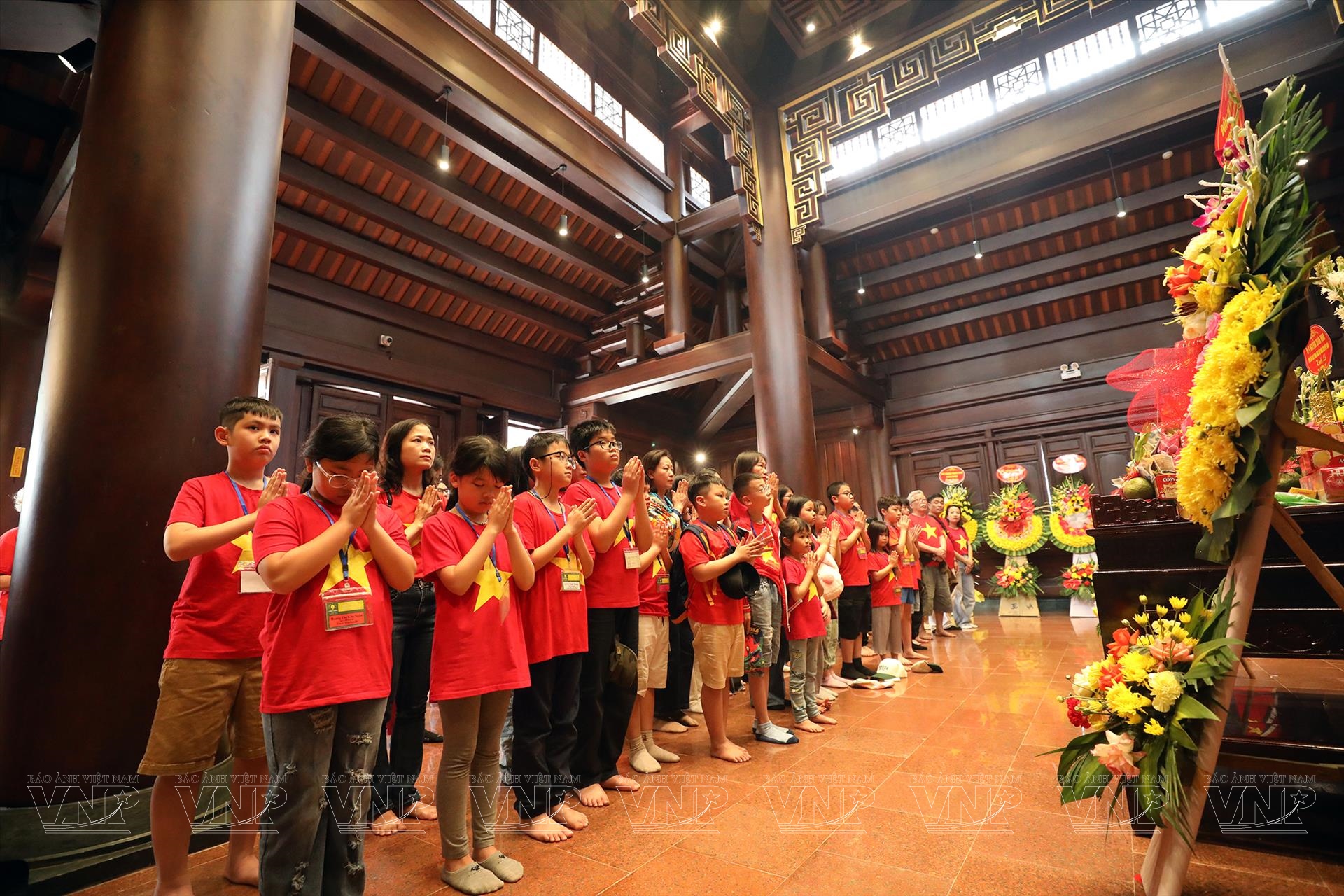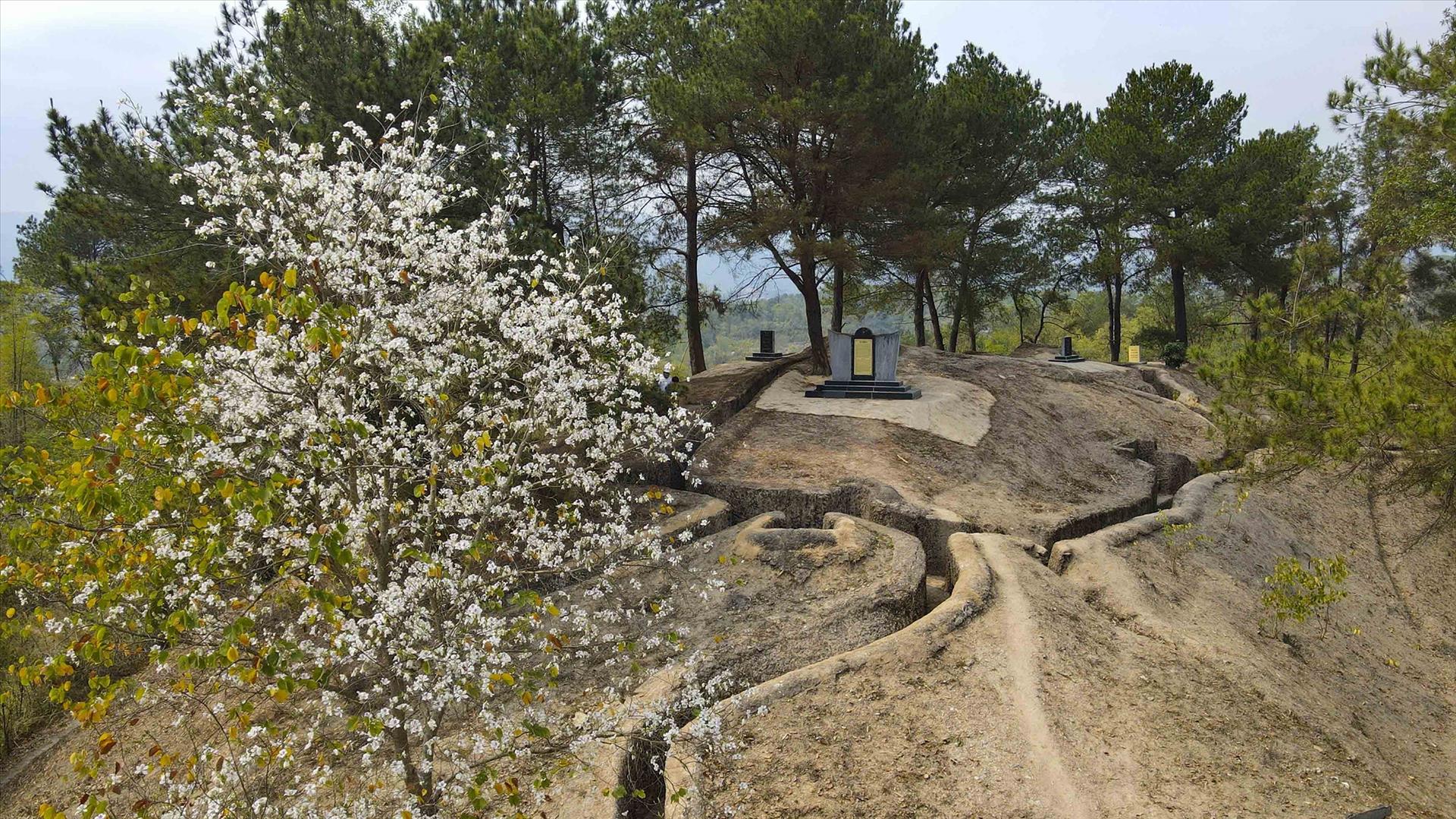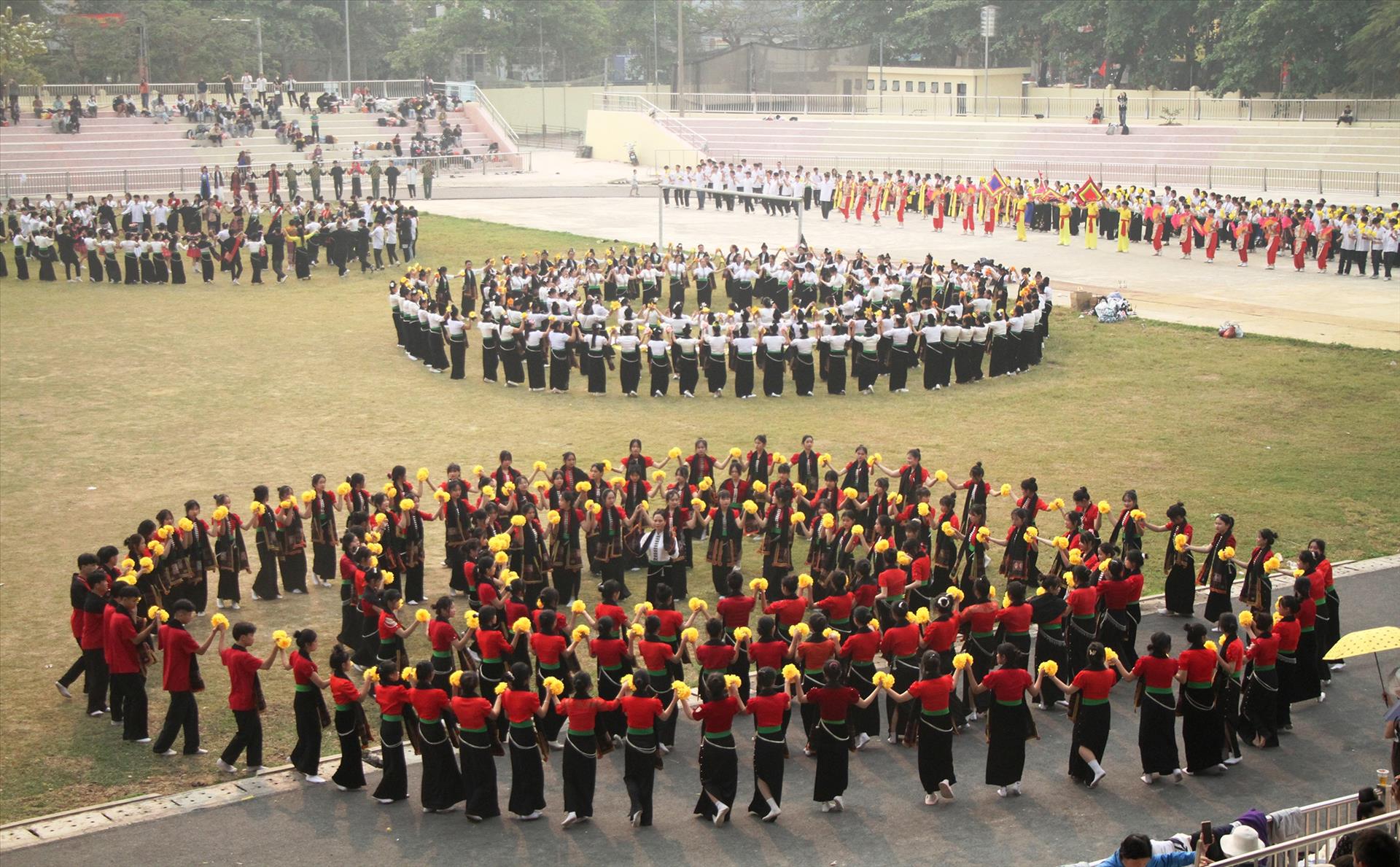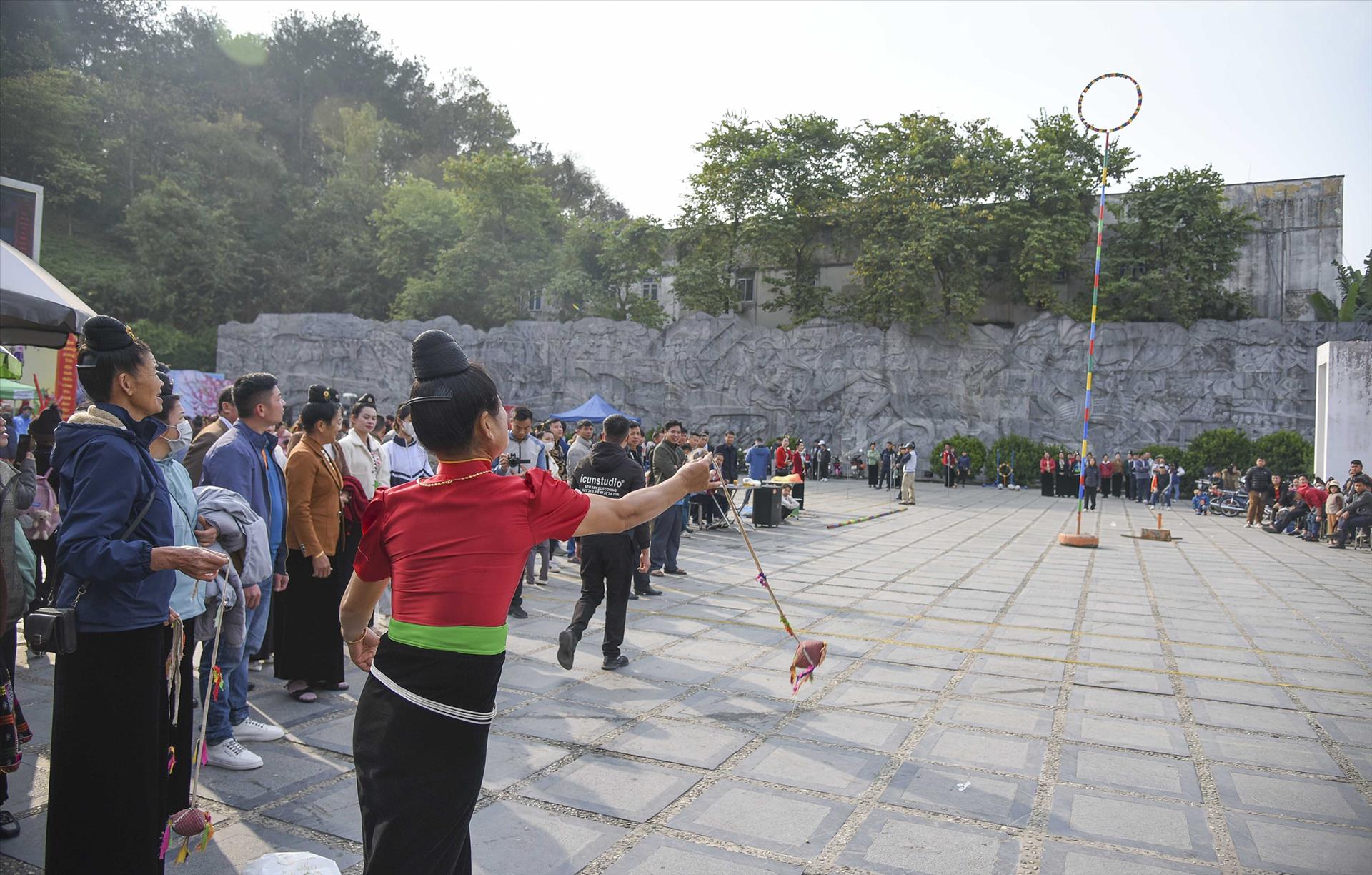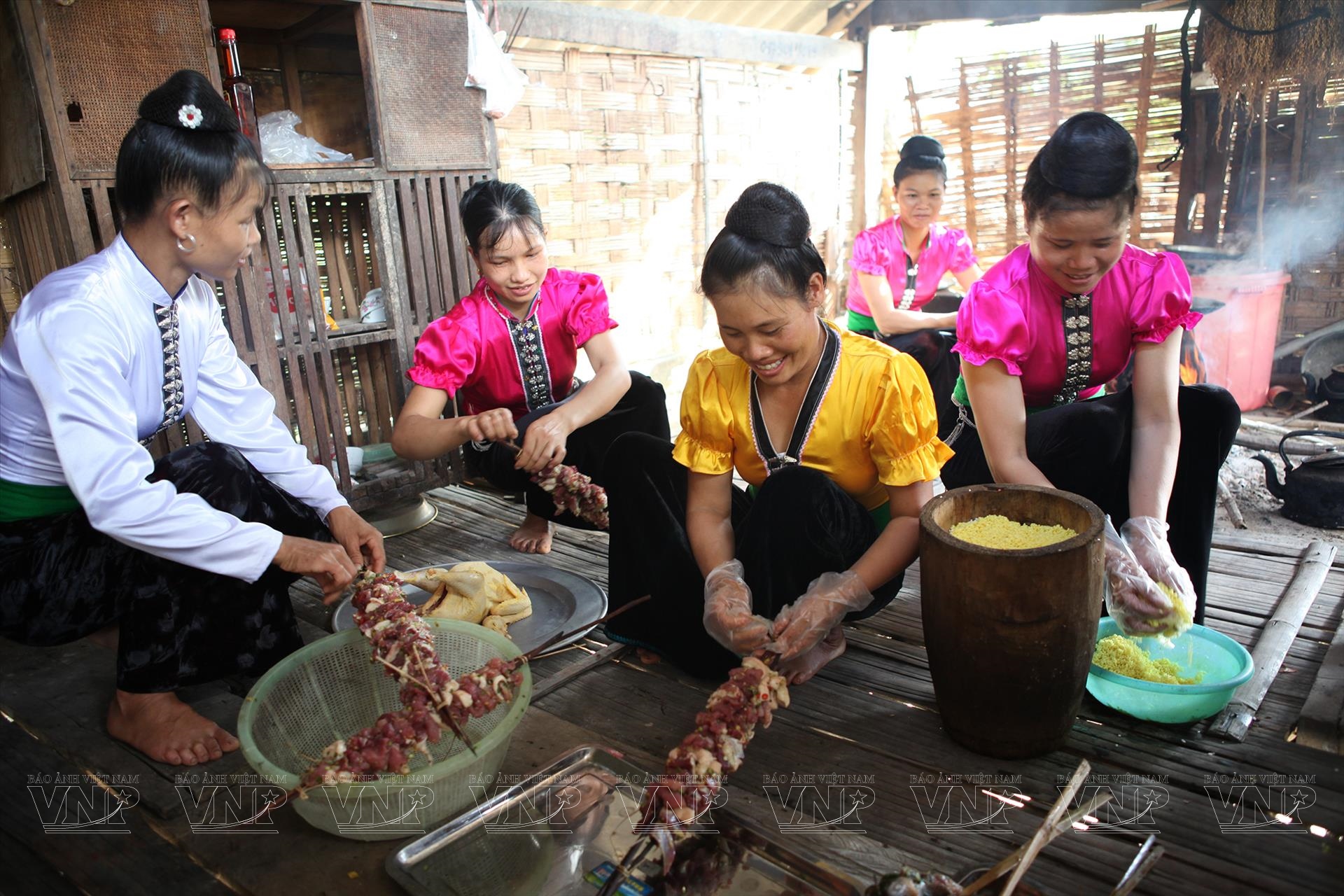Dien Bien - A New Tourism Hub in the Northwest
70 years ago, the name Dien Bien shone brightly on the world map with the historic Dien Bien Phu Victory over the French which "resounded throughout the five continents and was world-shaking” (05/07/1954-05/07/2024) Today, Dien Bien is known as a new emerging tourism center in the Northwest region with its strengths in historical-cultural and spiritual tourism, eco-tourism and nature exploration, and wellness and leisure tourism.
Bauhinia Blossoms of May Adorn Dien Bien
Our first stop upon returning to Dien Bien Province on the occasion of the 70th anniversary of the Dien Bien Phu Victory was the Dien Bien Phu Campaign Command Headquarters Relic Site, which is nestled amidst the dense primeval forest in Muong Phang Commune, Dien Bien Phu City. Here, visitors can witness with their own eyes the simple hut that served as the daily residence and workplace of General Vo Nguyen Giap (1911- 2013), and the hut where the General Staff convened meetings to discuss and make the historic decisions regarding the Dien Bien Phu Campaign.
Leaving the Muong Phang forest, we drove motorbikes along Highway 279, with the mountain pass winding on one side and a deep ravine on the other side. This was one of the historic artillery routes during the Dien Bien Phu Campaign. Continuing along Highway 279 to the gateway of Dien Bien Phu City, we visited the Him Lam Hill Relic Site. On the hilltop, dappled with sunlight and shaded by bauhinia blossoms, groups of tourists silently and respectfully lit incense sticks in memory of the hero Phan Dinh Giot and hundreds of soldiers who sacrificed their lives to gain the victory at Him Lam, defeating the strongest fortification cluster of the French.
From the Him Lam Hill Relic Site, we traveled along a new road named after General Vo Nguyen Giap. The road runs through the city center and heads straight to the Tay Trang international border gate which borders Laos. Along this route, there are many well known historical sites, namely Dien Bien Phu Victory Monument, May 7th Dien Bien Phu City Square, etc.
At the A1 Hill Relic Site, groups of visitors pause for long moment beside the massive crater atop the hill. This strategic vantage point played a crucial role in protecting the Muong Thanh center and guarding the entrance to the command bunker of General De Castries (Christian de Castries, 1902-1991).
After 39 relentless days and nights of “cutting through mountains, sleeping in trenches, getting drenched in forests, and eating rice balls”, the Vietnamese soldiers carved a tunnel through the mountain to place about a ton of explosives which demolished a portion of the enemy's defensive strongpoint and captured this key stronghold. This act paved the way for the historical moment when the "Determined to fight, Determined to win" flag of the Vietnamese army fluttered atop General De Castries’ bunker at 5:30pm on May 7, 1954, marking the complete collapse of the entire so-called “invincible” military base of Dien Bien Phu and etching the resounding victory of Dien Bien Phu into the annals of history. Seven decades have passed, and the month of May has once again graced the land with a vibrant tapestry of blooming white Bauhinia flowers, adorning the landscape alongside the remnants of war-torn craters. This ethereal spectacle shows that the ravages of war have receded, giving way to a Dien Bien pulsating with renewed life and vigor.

Dien Bien, a land blessed with majestic natural beauty, a salubrious climate, and a rich cultural heritage, stands as a beacon of tourism potential in the northwest region of Vietnam. Its confluence of historical significance, cultural vibrancy, and geographical splendor positions it as a prime destination poised for exponential growth. Capitalizing on these strengths, Dien Bien is set to emerge as a prominent tourism hub within the northwest sub-region, anchored by three key pillars of historical-cultural and spiritual tourism, ecotourism and nature exploration, and wellness and leisure tourism.
The Muong Thanh Valley, once the epicenter of Dien Bien Phu stronghold complex, has transformed into a cradle for preserving and promoting the Xoe dance of the Thai, captivating thousands of visitors each day.
As the rhythm of the Xoe dance echoes through the night air, the Thai of Muong Thanh gather in harmonious unity, their voices intertwining in a song that encapsulates the essence of their culture: "Without Xoe, there is no joy; without Xoe, the rice plants fail to bear grain, the cornstalks yield no cobs, and young men and women remain unpaired".
Lo Thi Buoi, a Thai woman from Phieng Loi Village in Thanh Minh Commune, Dien Bien Phu City, shares her deep connection to the dance, "We, the Thai, have no recollection of when the Xoe dance originated. We only know that every girl learns to dance Xoe as she grows up. No celebration or festival in Muong Thanh is complete without the graceful movements of the Xoe". Through generations, the Xoe dances have not only endured but flourished, earning UNESCO recognition as a Masterpiece of the Oral and Intangible Heritage of Humanity in 2021. Today, the Xoe dance stands as a cultural gem, gracing community-based tourism initiatives in Dien Bien.
Preserving and promoting the Xoe dance heritage while simultaneously fostering community-based and agricultural tourism has emerged as a unique approach for Dien Bien Province. From its initial implementation in 2003, encompassing eight pilot community tourism villages, this model has expanded across the province's districts. Villages like Che Can, Phieng Loi, and Na Su stand as exemplary models of this successful approach. Nestled amidst the scenic landscapes of Muong Phang Commune, approximately 30km from the Dien Bien Province center, Che Can Village boasts a close-knit community of nearly 100 households comprising over 430 individuals, all of whom are Thai. The people of Che Can Village are the custodians of a rich cultural heritage, including traditional Black Thai stilt houses, distinctive attire, deeply rooted beliefs, vibrant festivals, and, of course, the captivating Xoe dance. Additionally, the village is home to a thriving tapestry of traditional crafts, including brocade weaving and basketry. Complemented by its breathtaking natural beauty and pleasant climate, Che Can Village has emerged as Dien Bien's most successful community-based tourism model, captivating visitors from both within Vietnam and abroad to experience its cultural treasures and serene ambiance.
Dien Bien Province has many popular scenic spots such as Pa Khoang Lake, Huoi Pha Lake, Pa Thom Cave, Kho Chua La Cave, Pe Rang Ky Cave, Muong Nhe Nature Reserve, the hot mineral springs of U Va and Hua Pe, the scenic landscape of the Son La Hydropower Lake, and Pha Din Pass (one of Vietnam’s four most treacherous mountain passes - the path for artillery to get to the Dien Bien Phu battlefield).
The Dien Bien authorities are actively pursuing international and regional cooperation initiatives to strengthen linkages with neighboring provinces in Northern Laos, Northeastern Thailand, and China. This strategic approach aims to develop international and Northwest loop tourism routes, capitalizing on the unique advantages offered by Dien Bien Phu Airport, the sole civilian airport in the Northwest region, which provides direct flights to Hanoi and Ho Chi Minh City.
Leveraging its distinct potential and assets, Dien Bien Province is proudly hosting National Tourism Year 2024, coinciding with the 70th anniversary of the Dien Bien Phu Victory. This momentous occasion will be marked by grand national-level festivals, including the 2024 Bauhinia Flower Festival, the 70th Anniversary of the Dien Bien Phu Victory Commemoration, and the Northwest - Dien Bien Tourism Fair.
According to Chairman of the People's Committee of Dien Bien Province, Le Thanh Do, this year, the province aims to welcome 1.3 million tourists, generating a total revenue of approximately 2,200 billion dong (roughly 93 million US dollars). By 2025, Dien Bien aspires to attract over 1.45 million visitors, boosting overall revenue to 2,380 billion dong (approximately 101 million US dollars). These targets are expected to contribute around 10% to the province's average GRDP./.
Story: Tran Hieu
Photos: Trinh Bo , Tran Hieu, Hoang Ha/VNP, Xuan Tu & VNA
Translated by Hong Hanh
Designed by Trang Nhung
